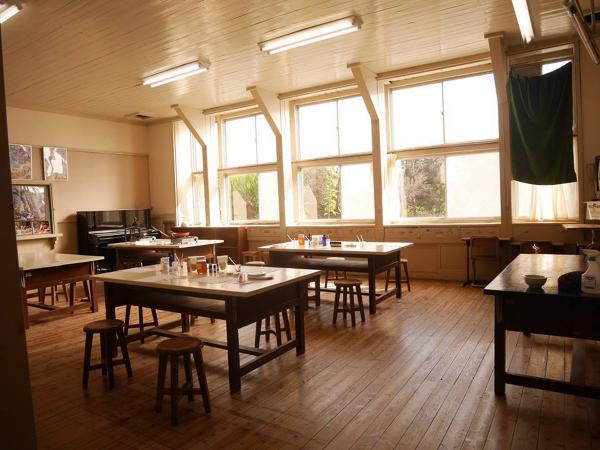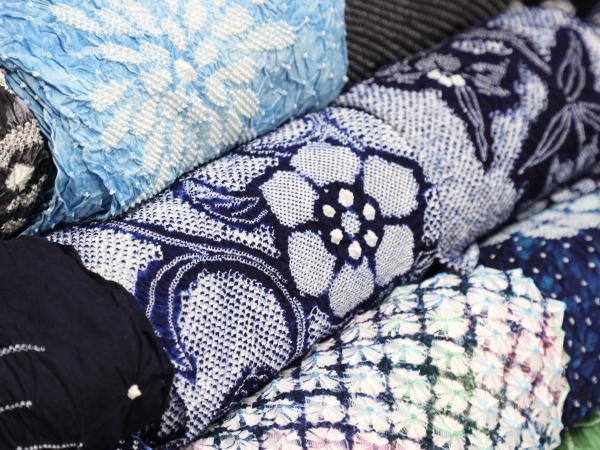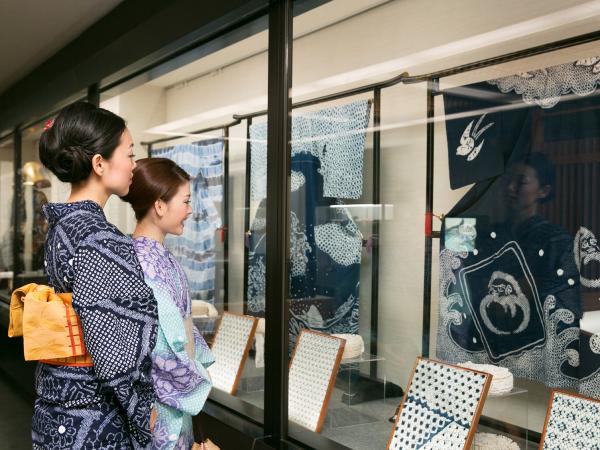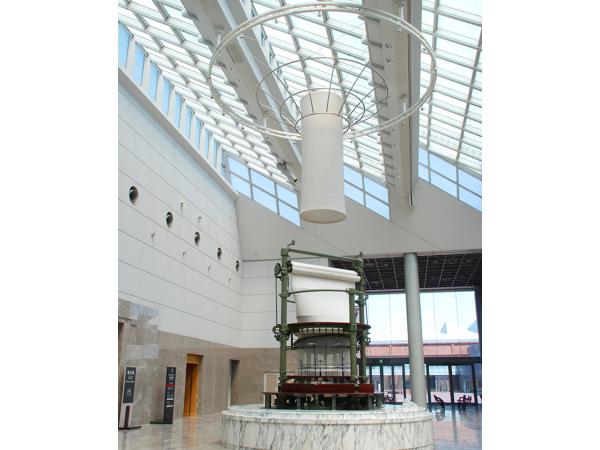If you are a traveller who wants more than just a glimpse of the local culture – someone who wants to fully enjoy hands-on experience and communicate with the locals, you couldn’t have picked a better destination.
Nagoya city, as well as the whole of Aichi prefecture, are often referred to as “the aggregation of craftsmanship” or “the capital of Japanese manufacturing”. Indeed, quality craftsmanship is a word that is highly valued by many that are based in Aichi, from independent artists, small family-owned businesses to global companies.

Since 1977, Aichi has been ranked first in the annual shipment value of locally manufactured products for more than 40 consecutive years. Automobiles and aerospace are a few examples of the industries that this area is famous for today, but the rich history of craftsmanship stretches back to more than 400 years ago with pottery, textiles and other traditional manufacturing industries.
The following are a few places in Aichi where you can see and experience the art of manufacturing, both cutting-edge and traditional alike.
Noritake Garden
As a big antique tableware fan, this is personally one of my favourite and my proudest home-city places in Nagoya.

Noritake is one of the leading companies in the ceramics industry with a history of more than 100 years. Noritake garden is built on the company’s former factory site, and the charming red brick building and the beautiful, film set-like garden provide a very cosy and nostalgic atmosphere for both visitors and locals alike.

Be amazed by the luxurious collection of old western-style Noritake pieces from the early 1900s, and immerse yourself in its elegant atmosphere of the museum, before heading to the Craft Centre to have a look at the creation process of porcelain. The best thing about the Craft Centre is that you can try it yourself!
Their China painting workshop is a truly memorable experience for both children and adults; using dissolved porcelain paint, you can paint freely on the chosen ceramic items like mugs and plates. I am quite aware of my messiness and clumsiness when it comes to creative drawing and painting, but I still managed to paint a pretty picture on a plate by painting over the heat-soluble drawing. Decorating your own one-of-a-kind plate or mug will be a wonderful souvenir to bring to your dining table at home!

Noritake Garden
[Location] 〒451-8501
3-1-36 Noritake Shinmachi, Nishi-Ward, Nagoya-City, Aichi
[Opening days / hours] Craft Center: 10:00 AM to 5:00 PM (hours may vary according to the facility)
[Holidays] Monday (opens in case of holiday or substitute holiday and closes the next day instead), year's end and New Year.
Facility Details Here >>
-Craft Center, Noritake Museum: Closed until the end of March 2021.
-Noritake Square Nagoya, Café Diamond Days: Closed until autumn 2021 (tentative)
*Please check the official web site for the latest opening status."
Arimatsu-Narumi Tie-dyeing museum
The Arimatsu-Narumi Tie-dying museum is located in the old town of Arimatsu, in the midst of the old street of well-preserved merchant houses. For over 400 years, Arimatsu has been famous for its high quality tie-dyeing technique called “Arimatsu-Narumi shibori”, and today the town is the main centre of fabric dyeing in the country.
The word “Shibori” literally means “to wring” or “to squeeze”, and it is a way of making different patterns on fabric by folding, twisting, stitching and tying the areas where you want the dye to be resisted. It is said that there are more than 100 types of traditional shibori patterns, and the Arimatsu-Narumi Shibori museum provides an idea of the different styles and techniques. Demonstrations by the talented local craftsmen are fascinating to watch, and you can also tie-dye your own shibori upon reservation. Try dyeing a handkerchief, a T-shirt, an apron or a table cloth, and you can have a glimpse of the traditional techniques.
The best part of the workshop is cutting off the yarns at the end to see the patterns... it’s always different, and each piece is unique! My advice: be bold and be creative. True, it is hard work. You might strain your eyes and get stiff shoulders towards the end, but the more effort you put into twisting and tying the cloth, the more beautiful patterns you can get. The experienced artisans will be happy to explain the techniques, so create a beautiful design to take home.

Arimatsu-Narumi Tie-dyeing museum
[Location] 〒458-0924
3008, Arimatsu, Midori-ward, Nagoya City
[Opening hours] 9:30 AM to 5:00 PM (demonstrations until 4:30 PM)
[Holidays] Year-end and New Year's, other unscheduled holidays
Vermicular Village
Vermicular Village has become one of the most fashionable and sought-after places to visit in Aichi since its opening in 2019. Once a foundry manufacturer specializing in dobby looms, Aichi Dobby caused a sensation when they first introduced their "Vermicular" cookingware range of cast iron and enamel pots in 2010, which allowed for cooking without water - hence the term "musui", Japanese for "waterless".

Vermicular Village is a newly-opened experiential complex facility along Nakagawa Canal, consisting of a flagship shop, a restaurant and a bakery café serving delicious food cooked in Vermicular. The cooking classes held regularly at the studio add another reason for the rise in popularity of the place.

I once had the opportunity to join their basic class of making MUSUI "waterless" curry. It was, without exaggeration, a jaw-dropping experience for me, adding no single drop of water and cooking in the natural juices of the vegetables! I don’t consider myself a great cook, but with the help of their wonderful craftsmanship, that day, I thought I could open a restaurant myself… it was that delicious!
Joking aside, the waterless curry is indeed one of their signature menus at the dine area, and my particular favourite is the "musui" beef curry pot bread served at the bakery café.
There are various bread and pastries available, all baked in Vermicular pans. If you want to dine at the restaurant "The Foundry", make sure to book a table in advance, and enjoy the exceptional craftsmanship through the dining experience.

Vermicular Village
[Location] 〒454-0805
Canal side, 4 Funato-cho, Nakagawa-ku, Nagoya City (Dine Area)
Canal side, 2 Funato-cho, Nakagawa-ku, Nagoya City (Studio Area)
[Opening hours] Varies by facility
Toyota Commemorative Museum of Industry and Technology
Toyota Commemorative Museum of Industry and Technology was established on the original site of the Toyota Group to preserve and utilize the Taisho era red brick factory buildings as a valuable industrial heritage. The museum introduces the transitions in industry and technology from Toyota Group's history in textile machinery, one of the key industries that helped build modern Japan, to their present-day development of automobiles.
What makes these exhibits unique are the real, moving machinery used to produce textiles or automobiles as well as the live demonstrations by staff members. You'll be able to observe, be surprised, and learn something new.
Through this, the museum communicates the importance of the “spirit of being studious and creative” and “making things.” Divided into two main parts, the Textile Machinery Pavilion and the Automobile Pavilion, you’ll want to take an hour and a half just to look at the main exhibits.
There’s also a library room, museum shop, restaurant, and museum café where you can enjoy a day with the family.

Toyota Commemorative Museum of Industry and Technology
[Location] 〒451-0051
4-1-35, Noritake Shinmachi, Nishi-ward, Nagoya-City, Aichi
[Opening days / hours] 9:30 to 17:00 (last admission at 16:30)
[Holidays] Monday (the following day if Monday is a public holiday), year-end and New Years
Facility Details Here >>
Saijoen “AIYA”
If you are a matcha (green tea) lover, a visit to the city of Nishio in the southern part of Aichi should be on the top of your must-do list. Nishio is famous for its production of high-quality matcha, and its history dates back to the 1200s. Saijoen “AIYA” is a long established matcha store with a history of more than 100 years, and here you can purchase various kinds of matcha, tea ceremony related items and matcha sweets. Organic matcha powders are perhaps recommendable to matcha-lovers, while there are also easy-to-enjoy green teabags and soluble matcha-lattes. Matcha flavoured buttered biscuits, matcha baum-kuchen and chocolate crunch are also very popular, and they are also perfect for souvenirs.

At their matcha museum “Saijoen Waku Waku (抹茶ミュージアム西条園和く和く), you can also learn about the whole process of manufacturing matcha. The highlight of the tour is that you can blend your own tea leaves and grind the blend into matcha powder, using an old-fashioned, manual stone grinder.

The stone mill is very heavy and it requires patience, but the sound of the stone mill is strangely relaxing. Have you ever tried freshly –ground matcha? (It’s a rhetorical question because I know that most of us haven’t!) Here you can try your personally blended, personally ground matcha with their delicious matcha sweets in the traditional tea room.
I have attended many tea ceremonies in the past, both casual and formal, but it really is a rare opportunity for you to experience the whole thing from growing tea trees, choosing the right tea leaves to enjoying it to the last drop. In the tranquility of the tearoom, you will find that the tradition of tea culture in Japan is not just about drinking tea; but it is about spending time for self-reflection and finding inner peace.

Saijoen “AIYA”
[Location] 〒445-0894
15 Yokomachiyashiki, Kamimachi, Nishio City
[Opening hours] 10:00 AM/1:00 PM/3:00 PM (start time)
[Holidays] Year-end and New Year's, first Thursday of the month"
Facility Details Here >>
Naori

“Naori” is perhaps one of the most unique activities that have attracted a great deal of attention over the last few years, and I am very proud to introduce it to you as the official ambassador. Situated in the mountain valley of north-eastern Aichi, Toei is a tranquil, small town with a population of just over 3000 people, accessible by train from Toyohashi city. Most of the town is covered by deep forest.

This town, however, is the only place in Japan that holds a sericite mine. The word “sericite” isn’t familiar to you? Let me put it this way: sericite is one of the main ingredients for make-up cosmetics, such as skin foundation and blusher items that are quite commonly used by many people around the world, including myself.

Sericite minerals from Toei are famous for its high quality and fine texture, supplying 80% of the Japanese market and 50% of the global market (!!!) At naori, you can make your own handmade powder foundation and other cosmetics such as lip cream and floral water, using natural materials from the local area.

The location of the workshop is perfect too; a charming classroom of an abandoned school. Mixing the minerals in the mortar and adding pigments require effort and time, but it sure is fun, reminding you of the little experiments in your high school chemistry class. The powder foundation of Toei will leave your skin soft and glowing!
My particular recommendation is to join the sericite mine tour and visit the working mine; a unique opportunity to see where your beauty product originally comes from. Walking through the tunnels in the mine is a thrilling adventure, but it is also strangely a very humbling one; nature is great, and we are simply a small part of it. Enjoy the tour, enjoy the workshop, and enjoy your communication with the locals. Just like I did, you will definitely fall in love with this town.

naori
[Location] 〒449-0206
13-7 Nokiyama, Shimoda, Toei Town, Kitashitara-gun
[Opening hours] 10:30 AM to 12:00 PM/1:30 PM to 3:30 PM
[Holidays] Wednesday, Thursday, and public holidays"
Facility Details Here >>
These are only a few examples of the many experiences you can try while in the area. Name your interest in this region and you are guaranteed to find an activity that you can take part in!

Writer
Irene Dewald
Irene is a radio DJ, TV presenter, narrator and MC from Aichi, Japan. She graduated from Royal Holloway, University of London in 2005, with a degree in drama and theatre studies. During her study abroad, she discovered her deep passion for traditional Japanese festivals and performing arts, which eventually lead her to return to Aichi and dedicate herself to promote local culture, traditions and hidden charms.




















